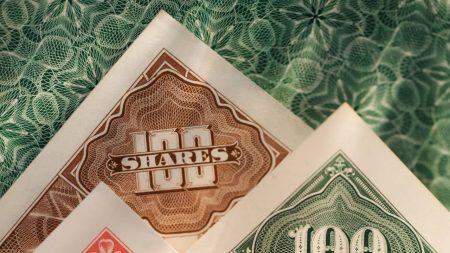Witthaya Prasongsin/Getty Images
Our writers and editors used an in-house natural language generation platform to assist with portions of this article, allowing them to focus on adding information that is uniquely helpful. The article was reviewed, fact-checked and edited by our editorial staff prior to publication.
A stock exchange is the central hub of market trading activity where you can buy and sell shares of publicly-traded companies. It gives anyone the chance to invest and be a partial owner in a company with the ability to reap the benefits of a company’s growth.
In the past, stock exchanges were bustling physical locations — picture the crowded floor of the New York Stock Exchange, littered with order sheets. In fact, in 2000, the activity on the floor of the NYSE generated around 1.5 million pieces of paper each day. However, those mountains of paper have largely disappeared. I’ve been on that floor for TV interviews plenty of times, but it’s become a remarkably sedate atmosphere. There’s plenty of elbow room now, and all that crushing background noise now feels more like a dull hum.
How stock exchanges work
The companies listed on a stock exchange may be the main attraction, but the parties involved are what keep the exchange functioning smoothly. Specialists and market makers maintain an inventory of shares that they can use to provide liquidity to the market in times of high demand or company-specific news that is driving volume. This liquidity assures that there is a buyer for every share being sold and shares available for every share that investors want to buy.
Stock exchanges are fueled by the foundational economic principle of supply and demand, and the price of a stock fluctuates based on buying and selling activity. It’s all done electronically in a matter of seconds or fractions of a second.
In the U.S., stock exchanges typically operate between 9:30 a.m. and 4 p.m. EST on business days, and they are closed on major federal holidays. However, even when they’re closed, stock prices are never set in stone. A company might announce the appointment of a new CEO. A quarterly earnings report may show that a company outperformed revenue expectations. News of a product recall could surface. All that activity can have an impact on what someone is willing to pay for a stock. Additionally, after-hours and pre-market trading — conducted when the exchanges are closed –— will sway a stock’s value.
What is the difference between a stock exchange and the stock market?
While both terms are often used interchangeably, the stock exchange and the stock market are not the same. The stock exchange is an organized marketplace, like the New York Stock Exchange or Nasdaq, where investors can buy and sell securities according to specific rules and regulations. It’s a central platform where companies can raise capital by issuing stocks and bonds.
On the other hand, the stock market represents the vast network of all tradeable stocks, including those listed on various stock exchanges and even those traded privately. It reflects the total trading activity of stocks within a certain region or country, often represented by indices such as the S&P 500. In essence, while the stock market encompasses the broader spectrum of stock trading, stock exchanges provide the infrastructure for these transactions to take place.
Major stock exchanges to know about
Stock exchanges bring together buyers and sellers all over the world. Here’s a rundown of some of the largest exchanges that fuel trading activity.
- New York Stock Exchange: The biggest stock exchange in the world with more than 2,300 listings and around 2.4 billion shares exchanged every day.
- Nasdaq: The first-ever electronic stock exchange, launched in 1971 and currently has more than 3,000 listings.
- Shanghai Stock Exchange: Around 1,800 listings and the largest exchange in emerging markets.
- Hong Kong Stock Exchange: More than 2,500 listings and a market cap of $32.1 trillion, as of April 2024.
- London Stock Exchange: One of the oldest stock exchanges, with more than 1,000 listings today.
- Tokyo Stock Exchange: The largest stock exchange in Japan with more than 3,900 listings.
In addition to trading stocks, there are also exchanges for commodities such as the New York Mercantile Exchange. Other exchanges such as the Chicago Board of Options Exchange and Montréal Exchange facilitate trading of financial products known as derivatives.
How to buy stocks on a stock exchange
You don’t have to go to a physical location to buy stocks, nor do you need to personally know anyone who wants to sell you their shares. Instead, you can easily open a brokerage account and place an order from your phone, tablet or desktop. The transaction occurs on the stock exchange. You can also invest in stocks through ETFs, which are exchange-traded funds that hold baskets of stocks and trade on an exchange.
Before you buy, though, do your research. Online brokerages make buying stocks as simple as a few swipes and clicks. Companies listed on major stock exchanges regularly release earnings reports that can offer insights into the state of their operations, and you can review historical data about past performance (with the exception of those recent IPOs, which can be buzz-worthy names but come with the risk of a limited track record). That will require some additional reading and work, but that’s the reality of smart financial management: If you’re going to invest your money, you should invest some of your time, too.
Read the full article here
















